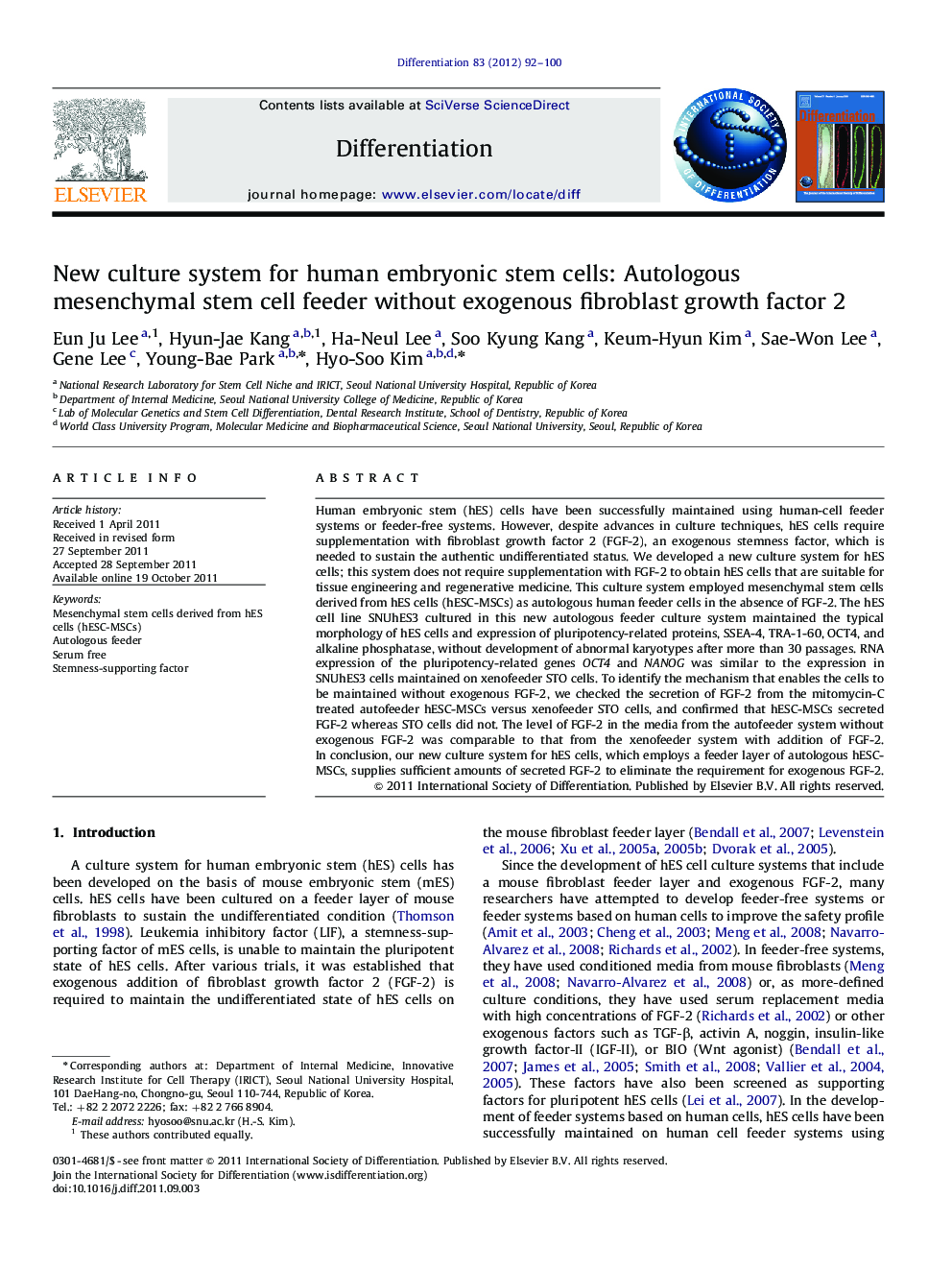| کد مقاله | کد نشریه | سال انتشار | مقاله انگلیسی | نسخه تمام متن |
|---|---|---|---|---|
| 2119617 | 1085406 | 2012 | 9 صفحه PDF | دانلود رایگان |

Human embryonic stem (hES) cells have been successfully maintained using human-cell feeder systems or feeder-free systems. However, despite advances in culture techniques, hES cells require supplementation with fibroblast growth factor 2 (FGF-2), an exogenous stemness factor, which is needed to sustain the authentic undifferentiated status. We developed a new culture system for hES cells; this system does not require supplementation with FGF-2 to obtain hES cells that are suitable for tissue engineering and regenerative medicine. This culture system employed mesenchymal stem cells derived from hES cells (hESC-MSCs) as autologous human feeder cells in the absence of FGF-2. The hES cell line SNUhES3 cultured in this new autologous feeder culture system maintained the typical morphology of hES cells and expression of pluripotency-related proteins, SSEA-4, TRA-1-60, OCT4, and alkaline phosphatase, without development of abnormal karyotypes after more than 30 passages. RNA expression of the pluripotency-related genes OCT4 and NANOG was similar to the expression in SNUhES3 cells maintained on xenofeeder STO cells. To identify the mechanism that enables the cells to be maintained without exogenous FGF-2, we checked the secretion of FGF-2 from the mitomycin-C treated autofeeder hESC-MSCs versus xenofeeder STO cells, and confirmed that hESC-MSCs secreted FGF-2 whereas STO cells did not. The level of FGF-2 in the media from the autofeeder system without exogenous FGF-2 was comparable to that from the xenofeeder system with addition of FGF-2. In conclusion, our new culture system for hES cells, which employs a feeder layer of autologous hESC-MSCs, supplies sufficient amounts of secreted FGF-2 to eliminate the requirement for exogenous FGF-2.
► We developed a new culture system for hES cells.
► This culture system employed mesenchymal stem cells derived from hES cells (hESC-MSCs) as a feeder cell.
► This system does not require the exogenous FGF-2.
Journal: Differentiation - Volume 83, Issue 1, January 2012, Pages 92–100